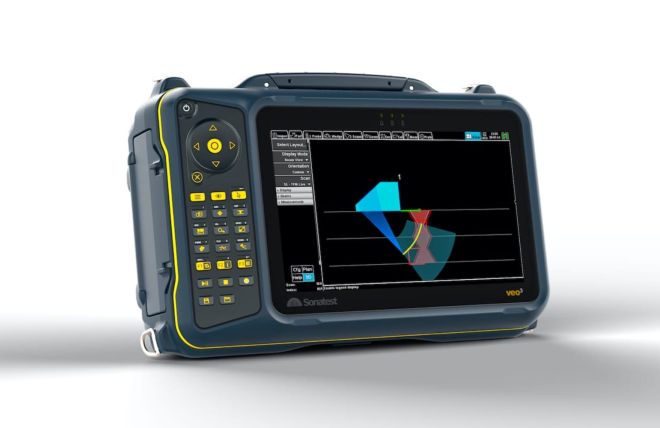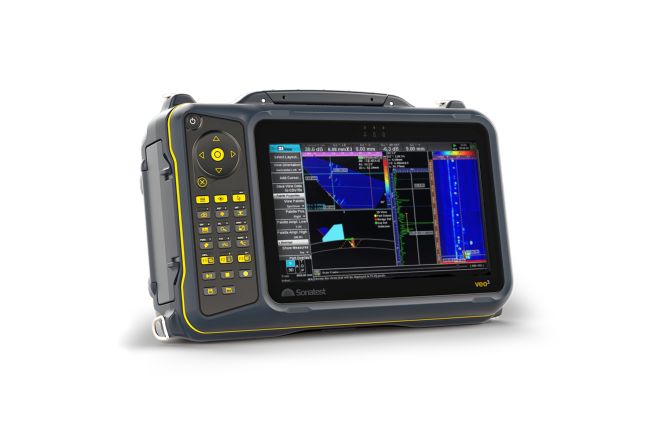- Blog
Carry Out Your Phased Array Inspections with Confidence Using the New Sonatest veo³
5th May 2021
Yvan Gosselin, Product Development, Sonatest

With the “yellow veo” launched in 2010, Sonatest was the first in the market to offer an advanced platform that integrated an embedded scan plan with a workflow-oriented menu layout.
Sonatest introduced the 16:64 veo model, which instantly became a very popular solution for channel configurations. With unmatched performance, our Linux-based platform was fast (e.g. instant focal law recalculations) and featured great performance levels (e.g. large file size up to 4GB). What’s more, Sonatest offered free and frequent software updates from the start.
In 2016, a completely new platform was created using a similar system architecture. The veo+ was launched. This platform was the first to offer user-selectable channel configurations from 16:64 to 32:128PR in an instrument. In addition, Xpair cloud remote access enabled users to operate it from a distance. The phased-array inspection for curved surfaces was offered as an upgrade.
In 2020, Sonatest innovated again. This time with the Veo3. This new product now offers a PCAP touch interface, user templates, and more importantly, live TFM. What really makes Veo3 stand out from any other product is its real concurrent multi-scan/multi-technique capabilities.
What does multi-technique mean? Inspecting welds with both PA and TOFD has been carried for a long time and is still widely recognized and accepted (if not desired). Imagine an instrument that can not only perform live TFM, but also can concurrently achieve PA and TOFD in one single acquisition. As the three inspection techniques are complementary, the POD is significantly increased. Furthermore, the time saved is considerable: one pass, one setup, one file, one position reference, one analysis. This is huge.
TFM is a good inspection technique for specific applications but for weld inspections, it has its drawbacks. As you undoubtedly know, a single TFM scan, by itself, may not qualify a weld because of the sensitivity of the technique towards the flaw’s orientation. With the new Veo3 and its unique multi-scan capabilities, users can benefit from the additional resolution of the TFM technique, all while qualifying a weld with standard PAUT. This is the benefit of an upgrade without the pain of change.
This tour de force was made possible thanks to Sonatest’s development on the Veo3. Its hardware/firmware/software architecture is unique. It is not a Windows PC with add-ons. It is a tightly integrated, embedded system ingeniously designed and tailored for the specific needs of a high-end UT instrument. Powered by a customised Linux OS, it provides the application level with optimised services, makes the system blazingly fast, which in turn enables multi-scanning capabilities. Think of your cell phone, whether it is iOS- or Android-based. It is responsive and quick, mainly because of its underlying operating system, which was specifically designed for performance. Now, imagine if your cell phone would run on Windows.
The Veo3 allows users to multi-scan. One unit, one setup, one pass. It maximises POD. It saves you time and money. Above all, it helps you inspect with confidence.
Please contact our Applications Team if you have any questions. You can also find more solutions on our website.
To follow further content and our newsletter, please contact us and check “Add to mailing list”.
Related Products
